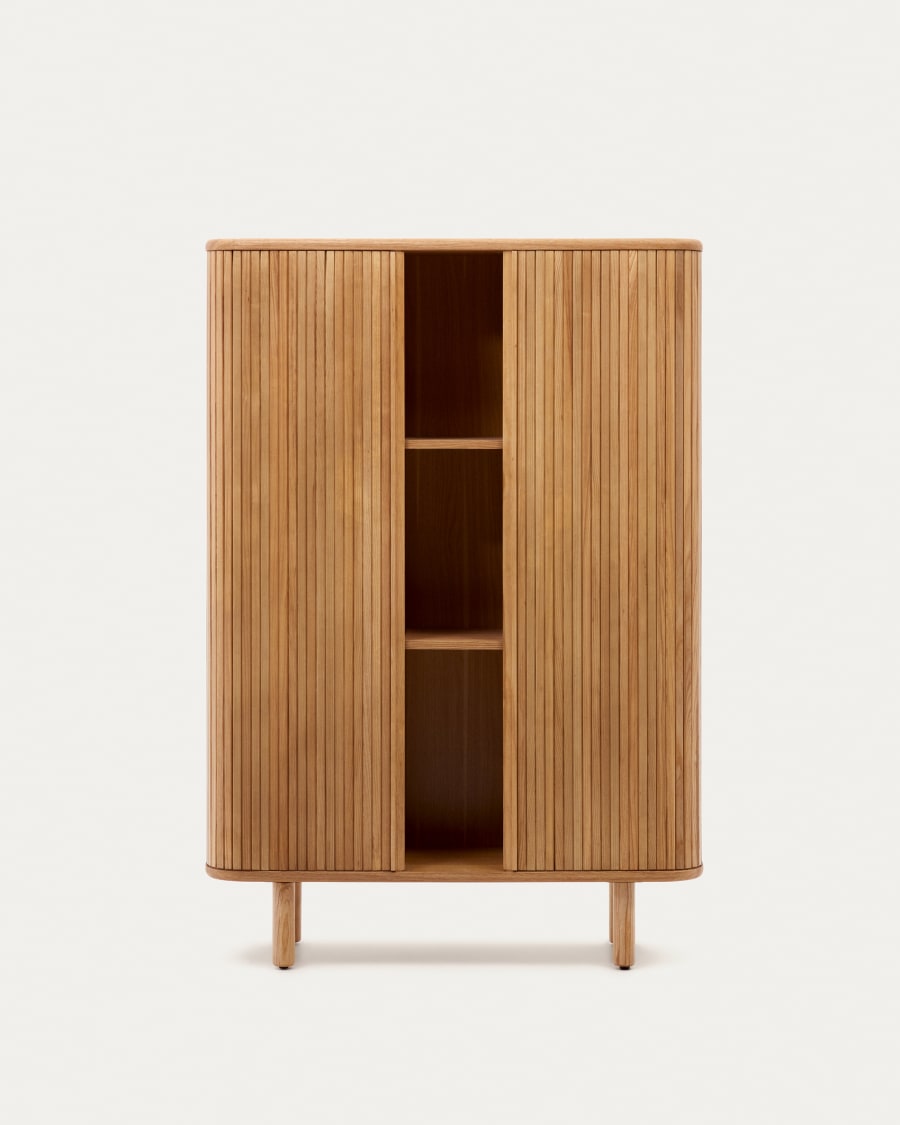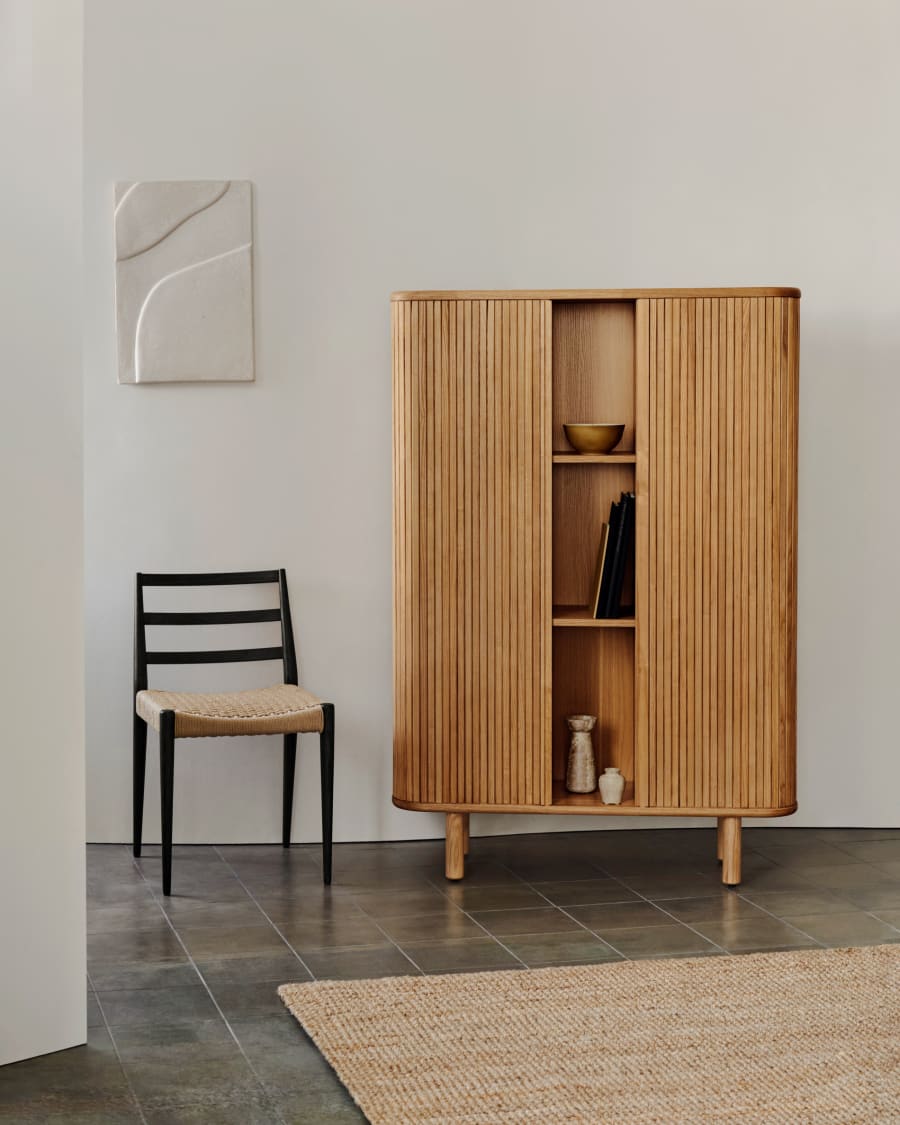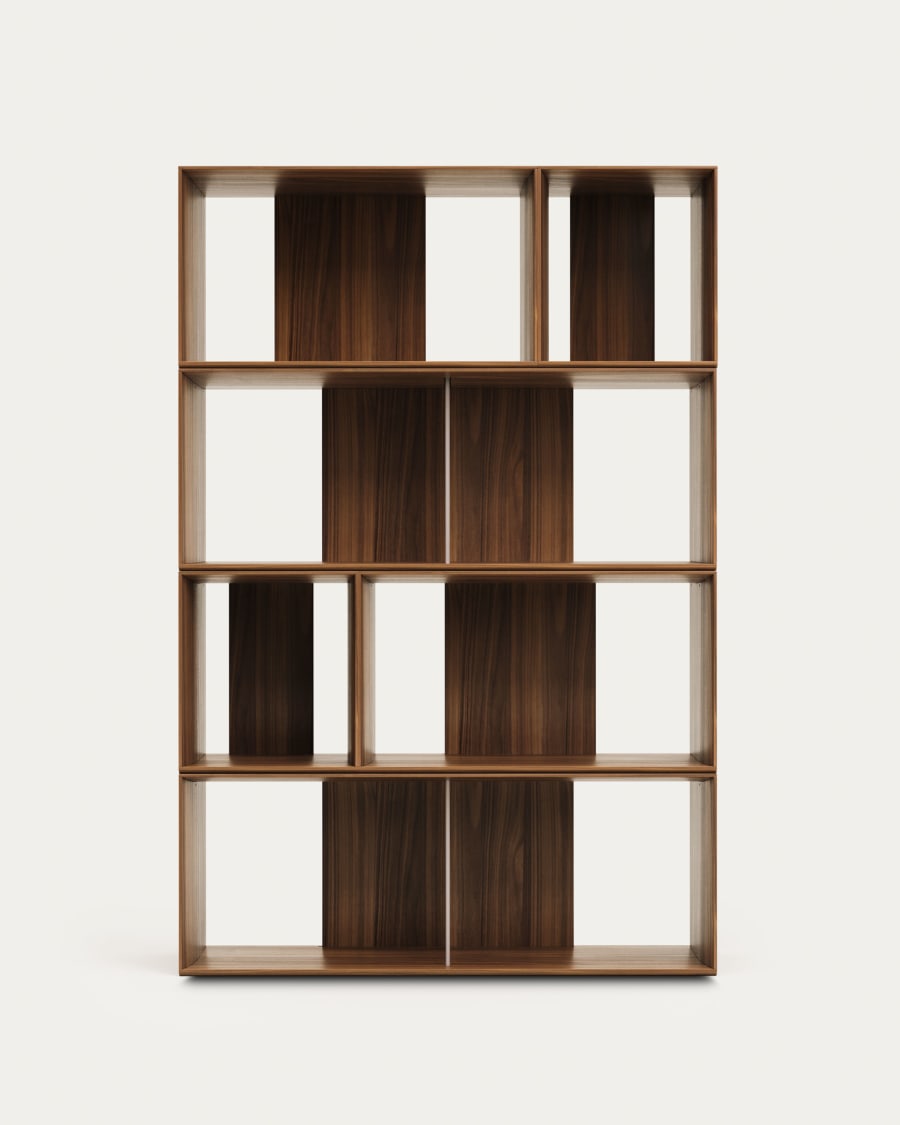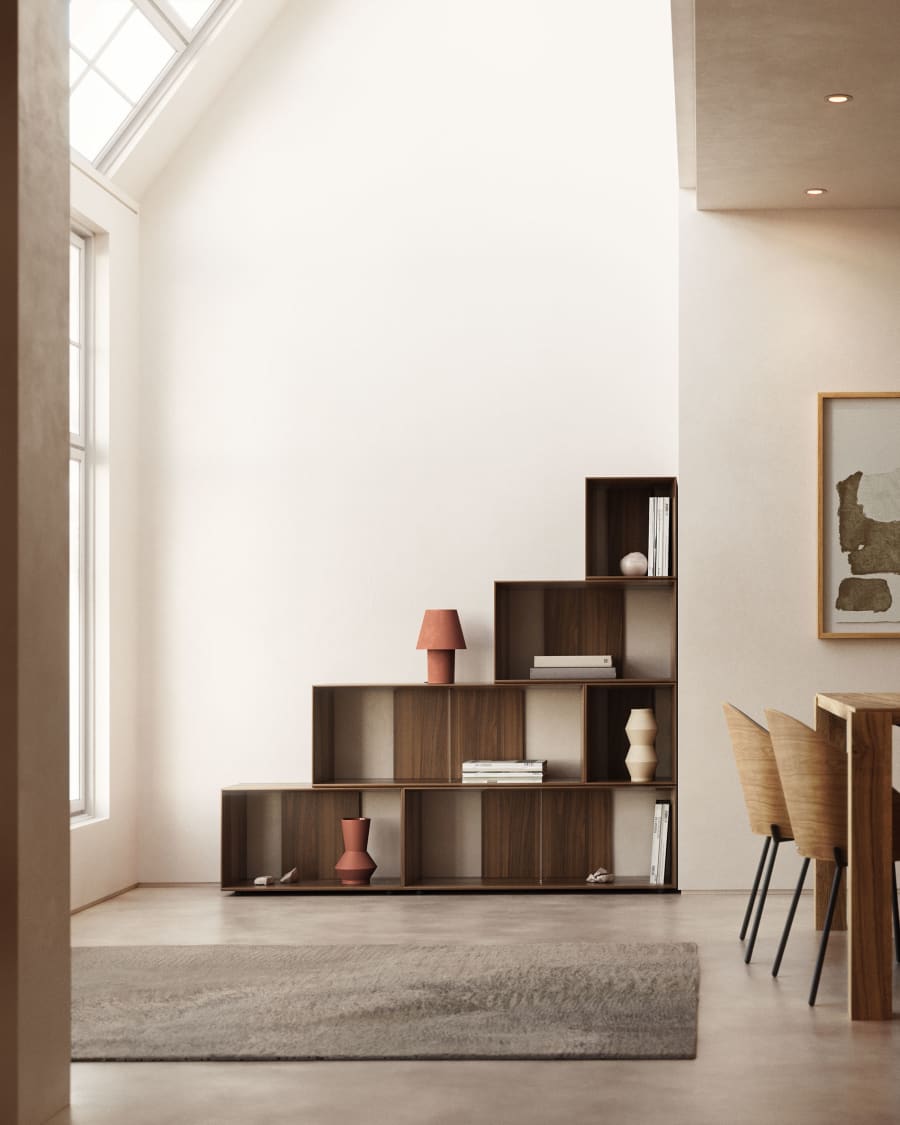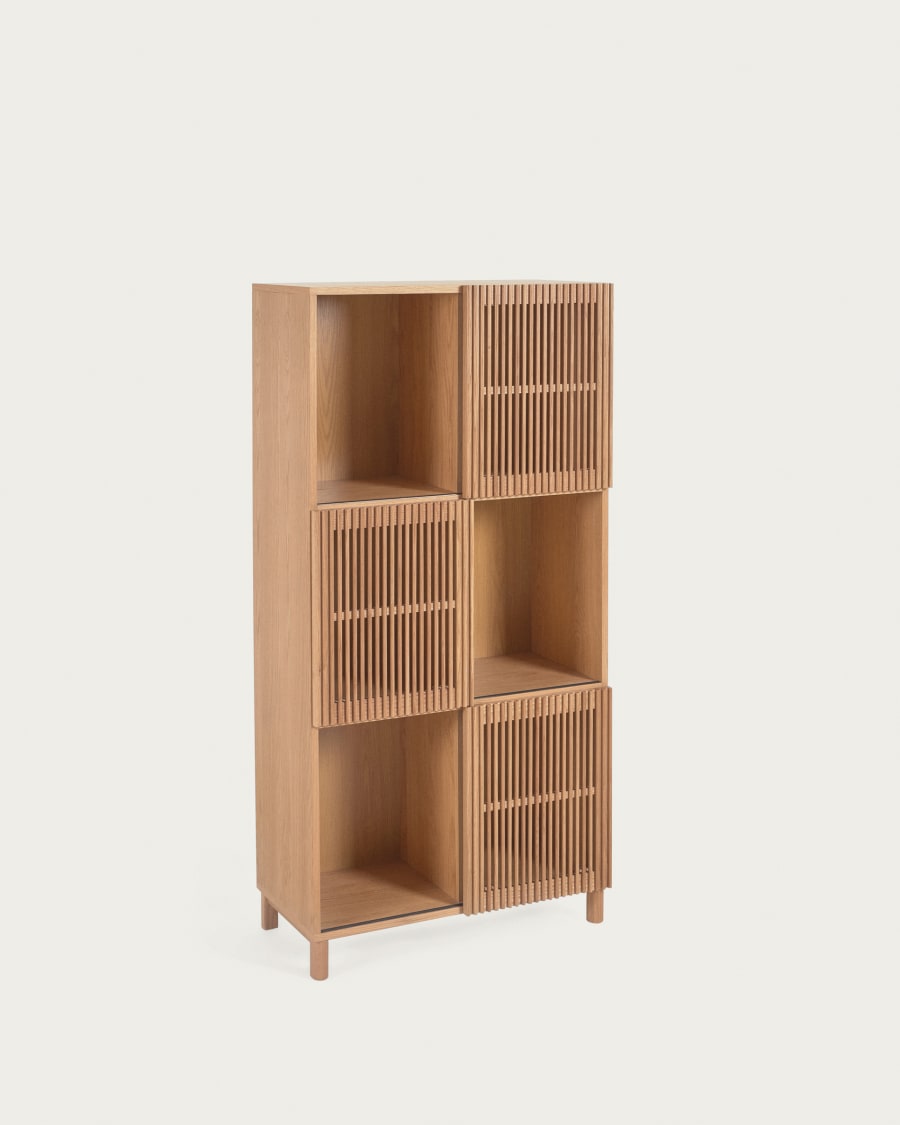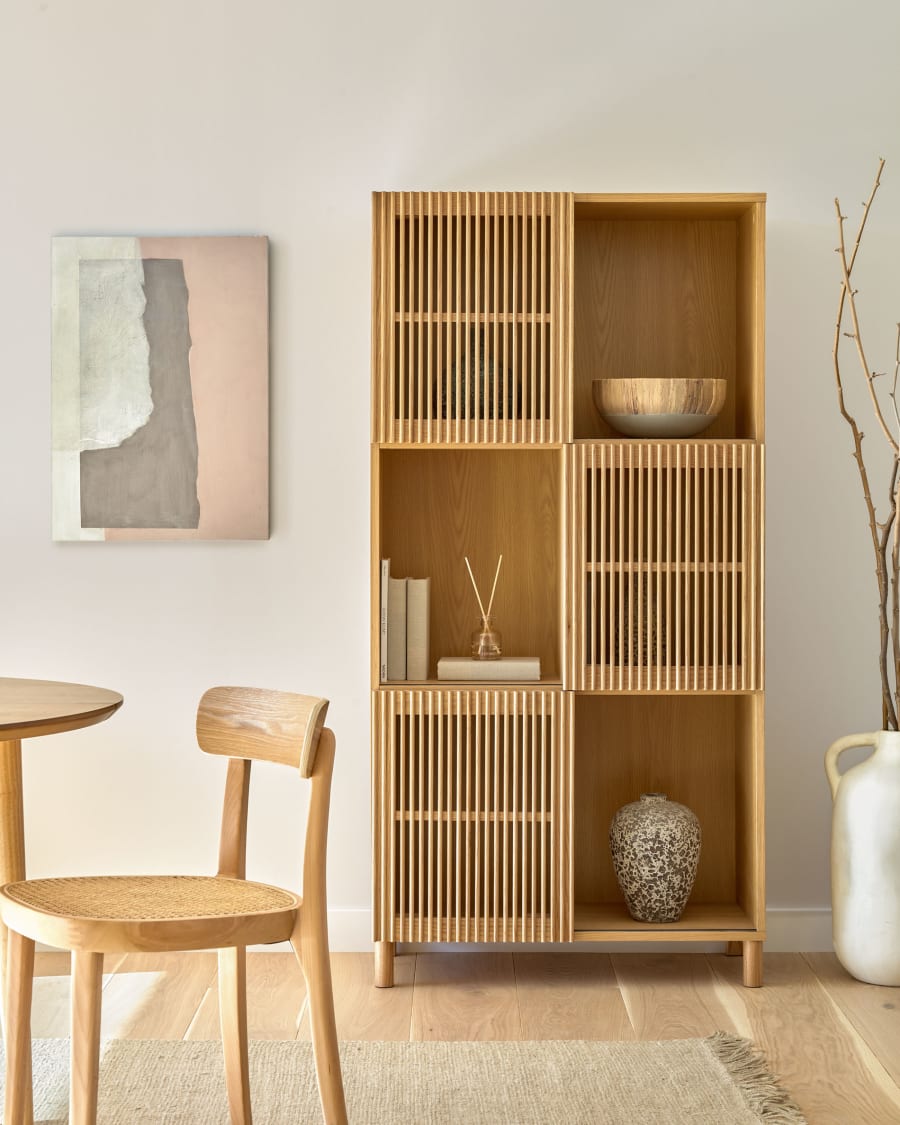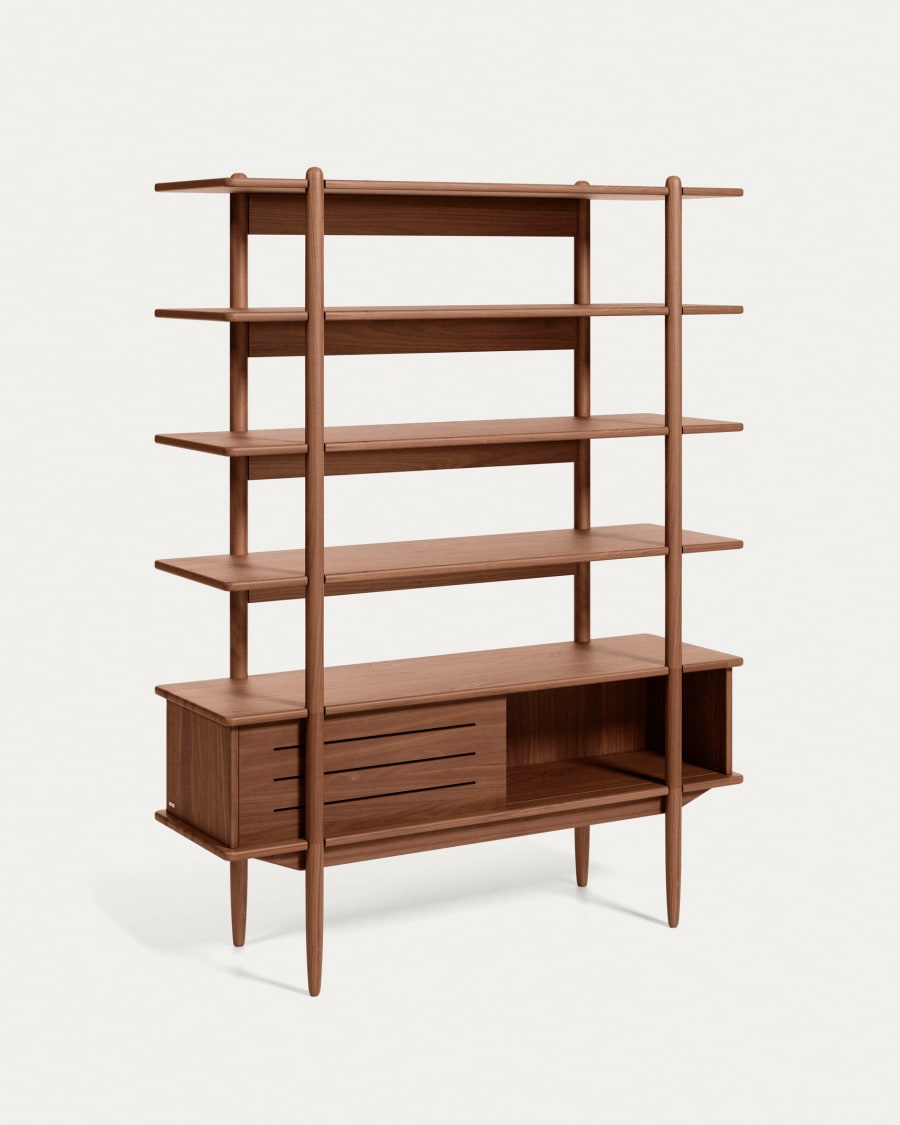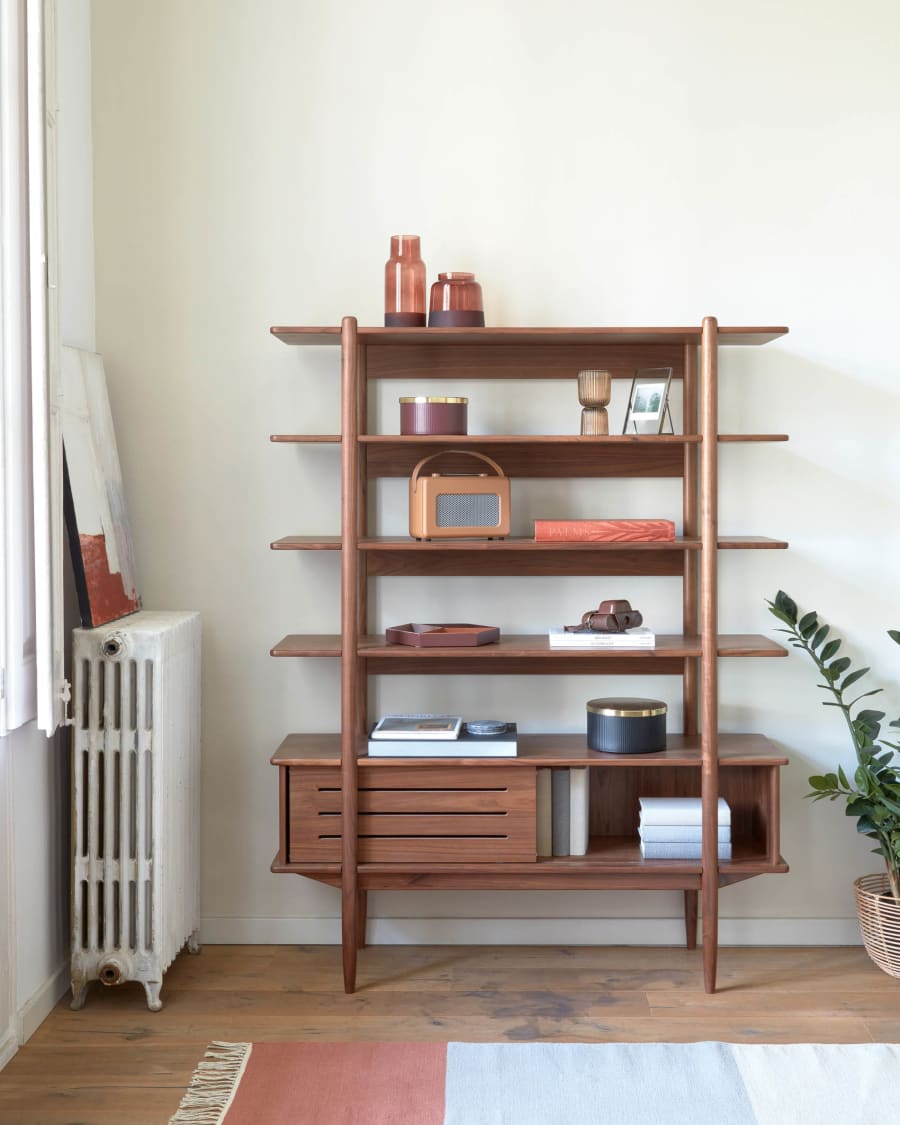- Home
- Japandi Shelves
Japandi Shelves
Japandi Shelves – Stylish Storage for Modern Interiors
Japandi shelves embody the seamless blend of Scandinavian functionality and Japanese wabi-sabi, creating spaces that prioritize calm and purpose. These shelves reject clutter, focusing on intentional design where every item serves a role. By merging the Scandinavian hygge—coziness and comfort—with Japan’s acceptance of imperfection, they offer a sanctuary for modern living.
Imagine a shelf that doesn’t just hold books but enhances your daily routine. This is the promise of Japandi design. How? Through material choices and uncluttered layouts that align with both cultures’ values. Let’s explore how these elements create harmony.
Natural Materials And The Wabi-Sabi Aesthetic
The heart of Japandi shelves lies in their use of wood, often in raw, untreated forms. Oak, teak, and bamboo dominate, chosen for their organic textures and subtle imperfections. This celebrates natural flaws—a nod to wabi-sabi—while Scandinavian design ensures these shelves are sturdy and practical.
Why does this matter? Natural materials connect us to nature, reducing stress. A shelf made of reclaimed oak isn’t just storage; it’s a reminder that imperfection is beautiful. Combined with smooth, geometric lines, these shelves become timeless pieces that adapt to evolving needs.
Neutral Color Palettes And Serene Atmospheres
Japandi shelves thrive in neutral tones: soft whites, warm grays, and muted earth hues. These colors reflect light, amplifying a room’s brightness. Unlike bold palettes, they avoid visual fatigue, letting textures and shapes take center stage.
- White oak shelves contrast gently with warm walls.
- Charcoal accents add depth without overwhelming.
- Beige linen baskets hide clutter while maintaining calm.
This color harmony isn’t accidental. It’s a deliberate strategy to create environments where the mind can rest—proven to improve focus and mood.
Functional Aesthetics In Modern Interiors
Every Japandi shelf balances form and function. Floating designs maximize floor space, while built-in units integrate seamlessly. Modular options let users adapt layouts as needs change—ideal for evolving households.
Consider a full-wall shelving unit with open and closed compartments. It organizes books and decor while anchoring a room’s design. Even floating shelves, though minimalist, offer multipurpose utility: displaying art, holding plants, or creating a reading nook.
Styling Tips To Emphasize Japandi Principles
Styling Japandi shelves requires curated simplicity. Avoid overcrowding; instead, highlight a few meaningful items. A ceramic vase, a single potted plant, or a stack of art books—each piece should invite mindfulness.
- Group items by texture (e.g., a woven basket next to a smooth stone sculpture).
- Use asymmetry to reflect organic beauty—no rigid symmetry.
- Integrate greenery like low-maintenance succulents.
This approach ensures shelves enhance well-being, turning storage into a meditative experience. By avoiding trends and focusing on timelessness, these shelves become heirlooms rather than disposable decor.
Why Japandi Shelves Are A Smart Choice For Today’s Homes
In a world obsessed with instant gratification, Japandi shelves ask us to slow down and savor. They’re not just furniture—they’re a philosophy of living, merging two cultures’ wisdom into one life-enhancing solution. Whether in a compact apartment or a sprawling home, these shelves refuse to compromise on quality or peace, proving that calm and practicality can coexist.
Ready to transform your space? Start with a single shelf and let its quiet elegance guide your interior design choices. Because real luxury isn’t loud—it’s the serene order of a well-placed Japandi shelf.
What Are Japandi Shelves?
Japandi shelves merge Japanese minimalism with Scandinavian functionality, crafting serene, practical spaces. Inspired by Wabi-Sabi’s imperfection and Hygge’s warmth, they emphasize natural materials, clean lines, and neutral tones for balanced, purposeful living.
- Japanese Minimalism: Avoids clutter, celebrates simplicity, and respects empty space.
- Scandinavian Functionality: Values usability, durability, and practical comfort in daily design.
- Natural Materials: Features light woods (oak, beech), bamboo, rattan, and linen for organic texture.
- Neutral Palettes: Uses soft grays, warm beiges, and muted greens to create calmness.
- Wabi-Sabi Influence: Embraces material flaws, valuing authenticity over mass production.
Rejecting decoration, these shelves focus on timeless utility and subtle beauty. Reclaimed wood or linen textures reflect Wabi-Sabi’s natural irregularities while maintaining Scandinavian ergonomics. The outcome? Storage that bridges two cultures’ love for intentional, clutter-free spaces.
In a world overwhelmed by mass-produced furniture, Japandi shelves provide calm. They turn spaces into mindful retreats where every line has purpose—and every imperfection has a story.
How To Choose Your Japandi Shelves
Selecting The Right Materials And Finishes
Natural wood dominates Japandi shelves, with oak, walnut, or teak in organic tones creating warmth and texture. Prioritize matte or raw finishes to emphasize authenticity, like acacia wood’s subtle grain in hand-finished designs. These choices reflect the wabi-sabi principle of embracing imperfection. Combinations of wood and metal add contrast, while sparingly incorporated stone or ceramic elements introduce tactile depth without disrupting minimalism. Neutral stains preserve the material’s innate character, ensuring timeless elegance. Teak’s natural patina celebrates aging, echoing Japanese reverence for transience.
Choosing The Ideal Shelf Type For Your Space
Japandi shelves adapt to diverse needs: suspended shelves (suspended shelf, suspended shelves living room) free up floor space and enhance lightness, while modular wall units (teak modular wall unit) offer adaptable storage. Built-in shelves (shelf built into wall) seamlessly merge with walls for a streamlined look, and full-wall shelving (whole wall shelf) organizes without visual overload. Each type maintains clean lines and understated forms, balancing functionality with the serenity central to Japandi philosophy. Floating shelves create airiness in small spaces, while modular systems adapt to display books or decor.
Considering Size And Arrangement For Harmony
Scale matters: oversized shelves (full wall shelving ideas) should retain simplicity to avoid clutter, while smaller units focus on purposeful display. Arrange items mindfully—group ceramics or plants to echo wabi-sabi’s organic beauty. Neutral palettes (beige, taupe) anchor calmness, with muted accents (soft blue, sage) for subtle contrast. Leave empty space to breathe, honoring the Japandi ethos of intentional living. Even modular systems (japandi bookcase) must prioritize uncluttered layouts to maintain tranquility. A minimalist bookshelf might spotlight a single bonsai or hand-thrown ceramic vase.
Optimize Storage and Styling with Japandi Shelves
The Art of Minimalist Storage
Japandi shelves master the balance between visibility and concealment. Open shelves showcase curated objects like handcrafted ceramics or architectural books, emphasizing quality over quantity. Hidden storage solutions—such as woven rattan baskets or wooden drawers—tuck away clutter while maintaining clean lines. This duality aligns with Wabi-Sabi’s embrace of imperfection and Scandinavian functionality, ensuring every item serves a purpose.
Materials like oak or walnut add warmth, blending natural textures with muted earth tones. Floating shelves maximize floor space, while modular units adapt to evolving needs. By prioritizing intentional design, these shelves transform storage into an art form, fostering calm in modern interiors.
Styling Your Shelves for Serenity
Japandi styling prioritizes tranquility. Neutral palettes—creams, soft grays, warm whites—create a soothing backdrop. Introduce organic elements like potted succulents or dried grasses to echo nature’s quiet beauty. Curated vignettes of 2-3 objects (a ceramic vase, a single art book) prevent visual overload, honoring the Scandinavian love for simplicity.
- Curated Objects: Select meaningful items, avoiding excess.
- Indoor Plants: Add life with low-maintenance greens.
- Ceramic Vases: Highlight artisanal textures in muted tones.
- Books: Stack horizontally for stability and visual weight.
- Candles: Use soy candles in simple holders for ambient light.
For functional serenity, integrate discreet storage. A woven basket beneath floating shelves holds remotes; a closed cabinet in natural wood hides electronics. This intentional layering ensures shelves remain both beautiful and practical, embodying Japandi’s core: harmony through minimalism.
Architectural Integration Of Japandi Shelves
Seamless Design Techniques
Japandi shelves blend into architecture through built-in configurations embedded in walls for invisible storage. Vertical slats mimic Japanese shoji screens, letting light pass while adding texture. Designs prioritize geometric precision and material authenticity over ornamentation.
Wooden vertical guides frame empty spaces, reflecting Japanese spatial concepts. Scandinavian practicality appears in proportions—deep shelves act as room dividers, shallow ledges display curated items. Minimalist aesthetics dominate through hidden supports.
Serene Space Creation
Merging Scandinavian functionality with wabi-sabi principles, these shelves create calm environments. Natural wood tones and neutral palettes prevent visual overload. Floating units maximize perceived space in small urban settings.
| Type Of Shelf | Advantages | Integration Considerations |
|---|---|---|
| Wall-Mounted | Visual lightness, floor space liberation | Needs reinforced anchors, suitable for renters |
| Modular Systems | Customizable layouts, adaptable storage | Requires planning for visual coherence |
| Recessed Units | Architectural continuity, dust-reducing | Needs structural work during construction |
Japandi shelving combines storage with organic warmth, acting as spatial anchors. Strategic placement channels energy flow while Scandinavian practicality ensures dual purposes—display and organization. Result: interiors where form follows emotion beyond function.
FAQ
What defines the Japandi shelves aesthetic?
Japandi shelves embody the harmonious blend of Japanese minimalism and Scandinavian functionality. Characterised by clean lines, natural materials like oak, walnut, and bamboo, and a neutral colour palette, these shelves prioritise simplicity and organic textures. The style embraces Wabi-Sabi principles, celebrating subtle imperfections, while Scandinavian influences ensure practicality. This creates serene, clutter-free spaces where form and function coexist seamlessly.
How do natural materials enhance Japandi shelving designs?
Natural materials like untreated wood, rattan, and stone form the backbone of Japandi shelves. Oak and teak offer warmth, while bamboo adds a tactile dimension. Matte or raw finishes maintain authenticity, and muted tones like soft greiges or warm whites amplify tranquillity. Even metal accents in black or brushed brass are used sparingly for contrast, always balancing industrial elements with organic textures to uphold the style's calming essence.
Which Japandi shelf types work best for compact spaces?
Floating shelves and built-in units excel in small rooms by maximising vertical space while maintaining visual lightness. Floating designs like suspended shelf systems eliminate floor clutter, while modular wall units (e.g., SYSTEM 01) offer customisable storage without overwhelming the room. For bathrooms or narrow corridors, compact models like the Lira single-door shelf or tiered wooden racks provide functional elegance without sacrificing spatial harmony.
How should I style Japandi shelves for a minimalist yet inviting look?
Curate thoughtfully: display 3-5 meaningful items per shelf, such as handcrafted ceramics, dried grasses in linen vases, or architectural coffee table books. Incorporate woven baskets for hidden storage and position potted monstera plants at shelf corners to soften the design. Avoid symmetry – stagger heights and textures for organic flow. Neutral-toned objects maintain cohesion, while a single statement piece (e.g., a black ceramic vase) adds quiet sophistication.
Can Japandi shelves integrate architecturally into a room?
Absolutely. Built-in shelving systems like the SYSTEM 01 Classic use powder-coated steel frames and modular components to create seamless architectural features. These systems allow custom configurations – from floor-to-ceiling bookcases to integrated room dividers – that become structural elements. The key lies in flush mounting and aligning proportions with room dimensions, transforming shelves into functional art that echoes traditional Japanese shoji screen geometry while meeting modern storage needs.
